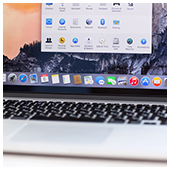 For decades, Apple has enjoyed a reputation of being nearly invulnerable to threats of malware. That may be an exaggeration, but there is a bit of truth to it. However, if you’re using Apple devices in your organization, you can’t afford to take this exaggeration for granted. We’re only just easing into 2017 and we’ve already seen the first Apple malware of the year. Read on to find out more.
For decades, Apple has enjoyed a reputation of being nearly invulnerable to threats of malware. That may be an exaggeration, but there is a bit of truth to it. However, if you’re using Apple devices in your organization, you can’t afford to take this exaggeration for granted. We’re only just easing into 2017 and we’ve already seen the first Apple malware of the year. Read on to find out more.
Where did it come from?
Dubbed ‘Fruitfly’ by the powers that be at Apple, it looks as though this relatively harmless malware has been hiding inside of OS X for several years. Fruitfly contains code that indicates it was adapted to move from a previous build of OS X to ‘Yosemite,’ which makes it at least three years old.
In fact, there are some lines of code from a library that hasn’t been used since 1998. It’s possible these were included to help hide Fruitfly, but experts have no idea how long it has been holed up inside the infected machines, or who created it.
What does it do?
So far, most of the instances of Fruitfly have been at biomedical research institutions. The administrators who discovered the malware explained that it seems to be written to grab screenshots and gain access to a computer’s webcam.
Considering the specific nature of its victims, and what it can accomplish, Fruitfly seems to be a targeted attack that won’t affect the majority of Mac users. However, Apple has yet to release a patch, and dealing with malware is not something to be put off for another day.
How should I proceed?
We’re always harping on the importance of network monitoring, and now we finally have proof that we are right. Fruitfly was first discovered by an administrator that noticed abnormal outbound network traffic from an individual workstation. Until Apple releases a patch, a better-safe-than-sorry solution is to contact your IT provider about any possible irregularities in your network traffic.
If you don’t have a managed IT services provider, this is the time to start considering one. Despite misconceptions, Apple devices need just as much care and attention as Microsoft and Linux PCs. And it’s not just security; if you want to optimize workstation performance, create a disaster recovery plan, or upgrade your database. Message today to get started.